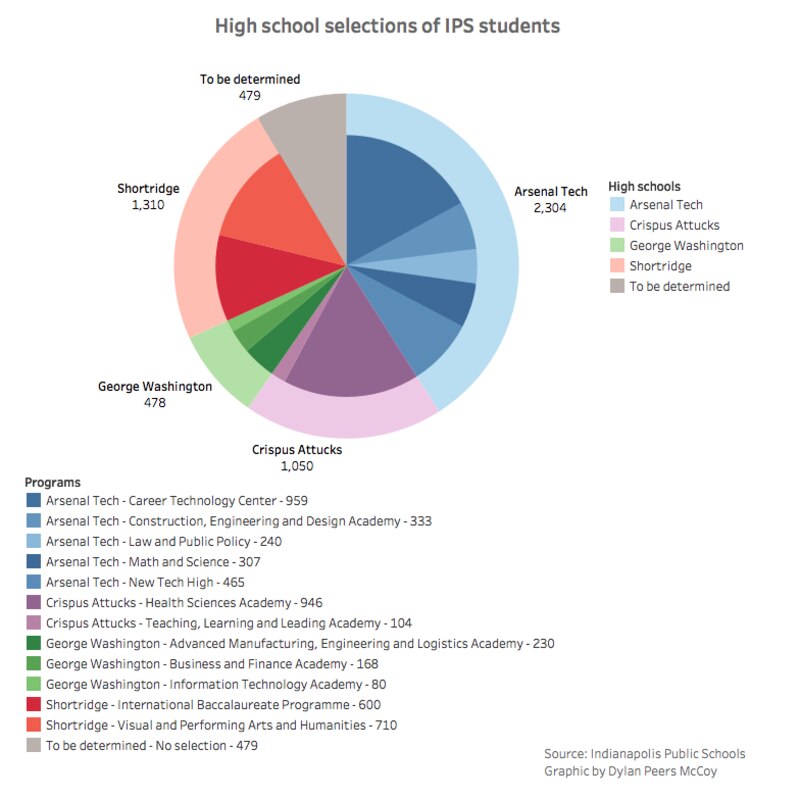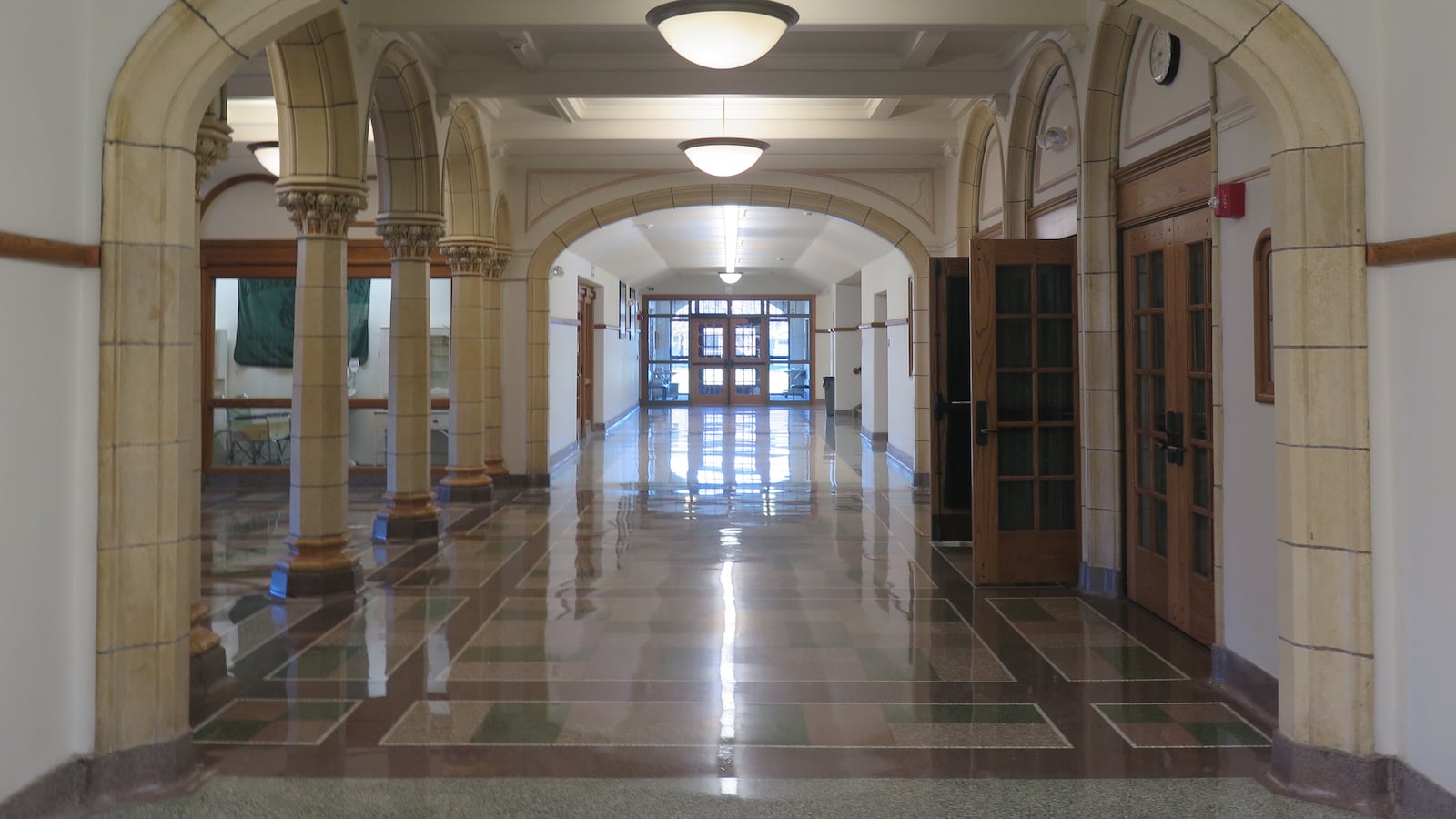High schoolers across Indianapolis Public Schools have made their choices for next year, and some schools are proving far more popular than others.
With all but four high schools set to close, the district is already in the midst of an upheaval. Students’ choices this year could have far-reaching implications for the configuration of the district for years to come.
Shortridge High School had the greatest increase in demand, with more than triple the 400 students enrolled there now listing it as their first choice for next year. George Washington High School, which also enrolls more than 400 students now, is not likely to grow too much. And while Arsenal Technical and Crispus Attucks high schools are both likely to grow by hundreds of students, neither saw interest grow as exponentially as Shortridge.
The final enrollment at each school will determine such critical issues as how many teachers are hired, what courses are available to students, and how much it costs to operate the buildings. Ultimately, students’ choices are likely to shape course offerings over the next several years, district officials said.
The enrollment figures are the result of a district mandate requiring students from across the district to select high schools and magnet programs this fall. More than 90 percent of 8th to 11th grade students have made selections so far. All students will be placed in their top choice program, according to the IPS spokeswoman Carrie Cline Black.
Fewer than 500 IPS students have chosen programs at George Washington so far, according to district data obtained exclusively by Chalkbeat. In contrast, more than 1,300 students have selected Shortridge, which will house the arts magnet program currently at Broad Ripple and the International Baccalaureate Programme. More than 2,300 students have chosen programs at Arsenal Tech (currently the district’s largest high school with 1,826 students) and 1,050 have selected Crispus Attucks (which currently enrolls 695).
The uneven distribution of students did not take Superintendent Lewis Ferebee’s administration by complete surprise.
At an Indiana State Board of Education meeting on Oct. 4, state Superintendent Jennifer McCormick asked, “What happens if you don’t have a nice, somewhat-even distribution? … What if it’s very out of whack?”
Ferebee said that the district will have room to accommodate students if a school proves especially popular. In the long term, he added, IPS may have to adjust, by replicating popular programs and discontinuing unpopular ones.
But Ferebee also said the district was hoping to persuade students to take another look at some of the programs that might not be popular at first.
For instance, he said, “We do know it’s going to take some time to educate families on construction and engineering. So we knew out of the gate, not many students may be interested, so it will take some time to build a program.”
Here is a full breakdown of the schools and programs that students chose:

In total 5,142 IPS students chose their preferred programs as part of a broad reconfiguration plan that includes closing nearly half of the seven high school campuses because of low enrollment. The district has not provided projections of how many students would enroll in each high school. But if enrollment doesn’t shift in the coming months, some campuses will be far closer to capacity then others. While the initial deadline for choosing schools and programs has passed, enrollment remains open to any students who have not yet made their selection.
If no other students enrolled in IPS high schools, Shortridge would be nearly 89 percent full. Arsenal Tech and Crispus Attucks would each be over 76 percent full. And George Washington would be about 25 percent full.
At the four remaining high school campuses, the district is aiming to “reinvent” high school by vastly expanding specialized programs in subjects such as business, engineering, and the arts, which students will study alongside their core classwork.
Next year, every student will be enrolled in specialized programs within high schools. District leaders hope that students will choose schools based on their interests, rather than their neighborhood.
Principal Stan Law will take over George Washington next year. In an interview about the school last week, before IPS released student selections numbers, Law said that it was important for students and families to get accurate information so they would select schools based on student career interests rather than neighborhood.
“Everyone has their ideas about things, but only certain people have the accurate information,” he said.
The most popular programs are the health sciences academy at Crispus Attucks and the Career Technology Center at Arsenal Tech, where students can study subjects such as culinary arts, welding and fire rescue. Each attracted more than 900 students. The least popular are the teaching program at Crispus Attucks, chosen by 104 students, and the information technology program at George Washington, chosen by 80.
Despite its apparent unpopularity with IPS students, the information technology program fits in with a state push to prepare students for careers in computer science and related fields. Gov. Eric Holcomb’s legislative agenda calls for requiring high schools to offer computer sciences classes, and the Indiana Chamber of Commerce wants computer science to be a high school graduation requirement.

